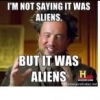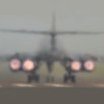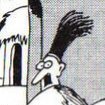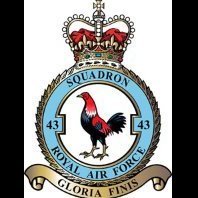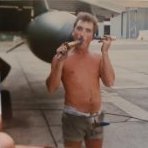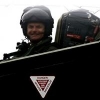-
Posts
4,267 -
Joined
-
Last visited
About Selwyn

- Birthday 20/09/1961
Profile Information
-
Gender
Male
-
Location
Sunny Manchester!
Recent Profile Visitors
7,426 profile views
Selwyn's Achievements

Very Obsessed Member (5/9)
4.6k
Reputation
-
Westland whirlwinds did not have bomb racks, they had bomb carriers. Racks is a US term not used by the RAF, you may have better luck searching this term. The carrier in the picture is a RAF universal bomb carrier used on most RAF aircraft in WW2. selwyn
-
Simple Questions, What mark(s) of AIM 9 were carried on Spanish F104G? Did the Spanish F104G have the underfuselage missile rails? Selwyn
-
Prior to 1983 there was no stowage for the long straps in harriers, they were added after several accidents/incedents. And prior to 1981 there were no long straps at all! I never saw this sight on a harrier in my time (up to 83). Selwyn
-
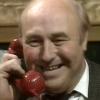
The City of Truro.
Selwyn replied to stevej60's topic in Classic Airfix (incorporating the Roy Cross Memorial) GB
I think you quite literally missed "the point" on this? Selwyn -
A quick update, The Route Numbers and Advertisements As you look at any picture of a B type bus it’s pretty apparent that they were all basically travelling advertising billboards, so any model of a B type has to have period advertisements. Now the kit comes with advertisements, all builds you see tend to use the kit scheme but I want something completely different for this build, also I don’t want to use the kit destination boards/route numbers either so it’s a case of make my own decals using decal paper. So where can you source period ads? Well first step was for me the 1/35 ICM kit. It doesn’t have Advertisement decals they are cut out jobs in the instruction booklet. I put them onto my scanner and scanned them into my computer. Windows has a excellent feature included called “Snip and Sketch” that you can cut out each individual advert as a separate file and you can then resize to 1/32. In word. You don’t even have to work out the increase in size, you just measure the ads on the Airfix decal sheet and size the scan accordingly. My other source is the internet, just search old adverts such as for old enamel signs, or look for items suitable as you surf, again your “Snip and Sketch” will be your friend. As seen below are my Advert "Work in Progress." sheet The three images directly below are examples of things I found surfing the Internet, as was the Rowntrees advert that I have resized to go on the side of the top deck, I am presently designing my destinations. As for route numbers the “stencil” font in windows is good as the route numbers were originally stencils anyway. The destination blinds were custom, no such thing as font sets in 1910, most of them were sign written by hand. I use Agency FB font usually as a basis, bit you have to play around to get what you want. Best idea is to look at pictures of B type buses, look at the destinations and make them as close as you get. Some have small letters for abbreviations such as Rd, or a familiar sight is “Charing Cross” depicted as Charing +. I use Powerpoint to make these up as you can’t do this in word, The trick is to construct your blinds in large fonts (up to 10X larger than required, it makes it easier to work, and when you have got the thing right “Snip and Sketch” it as a picture which you can put it into word and resize it to your requirements. resizing a picture does not lose your formatting. There is a problem with using your own home printer when you need to add white lettering. Unless you have a specialist (read expensive!) printer there is no such thing as white ink,The printer normally uses the white paper to represent the lettering. So how do we get around this? Well I have a little trick I use to get around this. What I do is when I paint my model I paint a small piece of plasticard about 50mm x 50mm the same colour, I paint it exactly the same as the kit using the same undercoat if used. I then scan the colour card in to my computer and save it as a picture. I then paste it into Powerpoint size it bigger if required, draw a text box on it and add the lettering in white. Again when happy with this “Snip and Sketch” it as a picture and resize as required. Cut the decal as close to the text as possible and when applied it will not be a perfect match but as close as you can get to the base colour. A coat of varnish helps it merge with the background colour. I find that I use white decal paper the most, Clear only occasionally. So the decals are in production, the next step will be to apply them! That’s for the next installment. Selwyn
-
Just a point. They are not Ammo boxes they are Magazines. Ammunition is delivered to the aircraft in ammunition boxes and then transferred to the Magazines to be loaded to the aircraft. Selwyn
-
Search modeldecal raf letters and numbers they are readily available from hannants and on e bay Selwyn
-
Those are definitely not RAF Uniforms . Selwyn
-
As a starter These are Lysander Mk II of 225 Squadron RAF Selwyn
- 13 replies
-
- 1
-

-
- No. 225 Sqn
- RAF
-
(and 1 more)
Tagged with:
-

Douglas Boston III***Finished***
Selwyn replied to PeterB's topic in Classic Airfix (incorporating the Roy Cross Memorial) GB
Just a quick addendum: AL693 flew 31 sorties in 88 Sguadron between 23 March 1942 and 3 January 1943 before going to North Africa. In later served with 114 Squadron and was lost in a crash landing on 17 September 1943. (IWM) Selwyn -
Progress update The build-up of the bus is progressing since my last post in accordance with the instructions. I have realised I forgot to tell you about one modification on the side panels, that is there should be a small beading added around them which I have now added, see image below. Apart for the changes/modifications listed earlier there is only one other thing you have to modify and that is related to the chassis rails. The kit comes with “Life Guards,” slatted frames that stopped people rolling under the rear wheels in an accident. After a multitude of trial fits of different designs, the type as depicted in the kit were fitted progressively to all vehicles after July 1913. As our vehicle predates this you will have to fill the locating holes in the chassis rails. Now to colours! When initially delivered most of the LGOC bus fleet ran in an overall dark Red colour (except the chassis which was painted Black), which had been adopted as standard in 1909. However after some trial colour experiments that were carried out in 1913, LGOC tried out a colour scheme that changed to a brighter red with off White window frames with Green lower curved panels. The chassis remained Black. This trial scheme was applied to some buses operating from the Hendon garage. After a few months the Green was changed to a chocolate Brown colour. This scheme was then adopted as the LGOC standard in 1914, and was to be seen with a few modifications on many types of London buses well into the 1930’s. Just a note if building the kit out of the box is that the Airfix instructions would have you paint the lower panels in black which is wrong! As our bus is a 1910 model, we will be painting it overall dark red. I have already painted the top deck in this dark Red colour, the seats/deck are in the same chocolate Brown colour as above. A Historical Note You would think that at this time (pre and post WW1) that the London B type buses were all the traditional London Red colour, the truth is entirely different. In London at that time there were numerous bus companies that were “Associated” with the LGOC. These were companies that were owned by the Underground group of companies (who owned LGOC) that operated as separate entities, and other private bus companies that contracted the LGOC to supply vehicles to operate their routes. So you could see B types operating in these companies colour schemes. Examples were: The “Associated Bus Company, which operated B types in LGOC colours but with “Associated” fleet names. Blue and Yellow colours of the “Central” company. Green and Cream of the “Metropolitan Steam Omnibus Company. Light Blue “Southern.” Dark Blue for the M.E.T. Company. And there was many others. A Metropolitan Steam Omnibus company B-type bus, B2066, this bus would be in green and cream. To give an example, “Central” operated a fleet of Leyland model X2 buses from 1908 onwards. LGOC took over Central in 1913 but the buses remained in central livery these ran alongside and were eventually replaced by B types that operated in the same colour scheme. One of these Leylands is the UK’s oldest preserved bus and shows the Central livery perfectly. I aim to build a B type in this colour scheme in the near future. B type in these colours B types were also purchased out of London, either as new or second hand. Examples were used by Devon General the Guernsey Railway Company, and Rotherham Corporation Tramways amongst others. There is the potential for many colour schemes using this kit. Sometimes I think that Airfix could have sold a lot more of these kits if they had done a bit more research into colour schemes! Selwyn
- 13 replies
-
- 10
-

-
The only one I actually saw started was at Wittering in 1980. I wouldn't say it looked a bit of a faff, but they mucked about with it so much for so long that I am still very convinced after all these years that they ended up kick starting it! Selwyn
-
As far as I know lightnings were AVPIN started only. Selwyn



